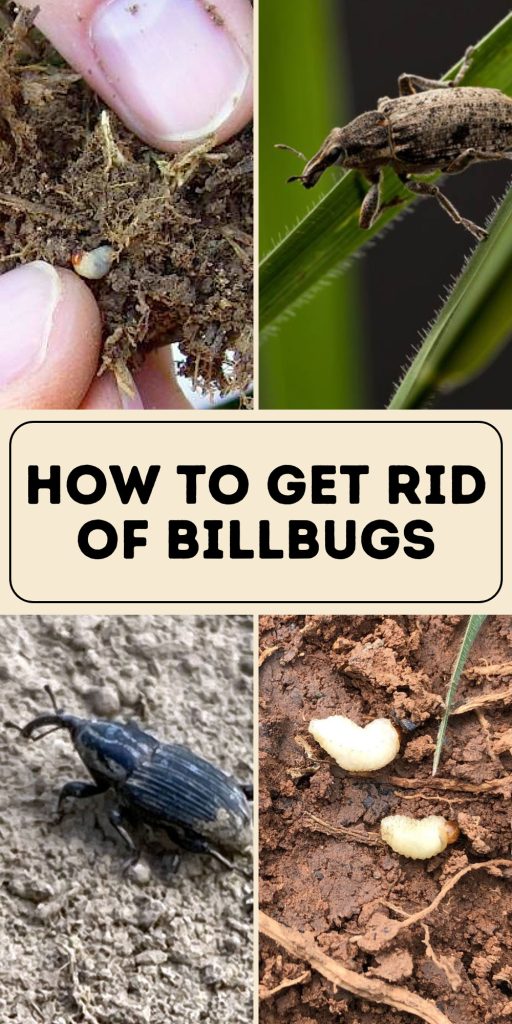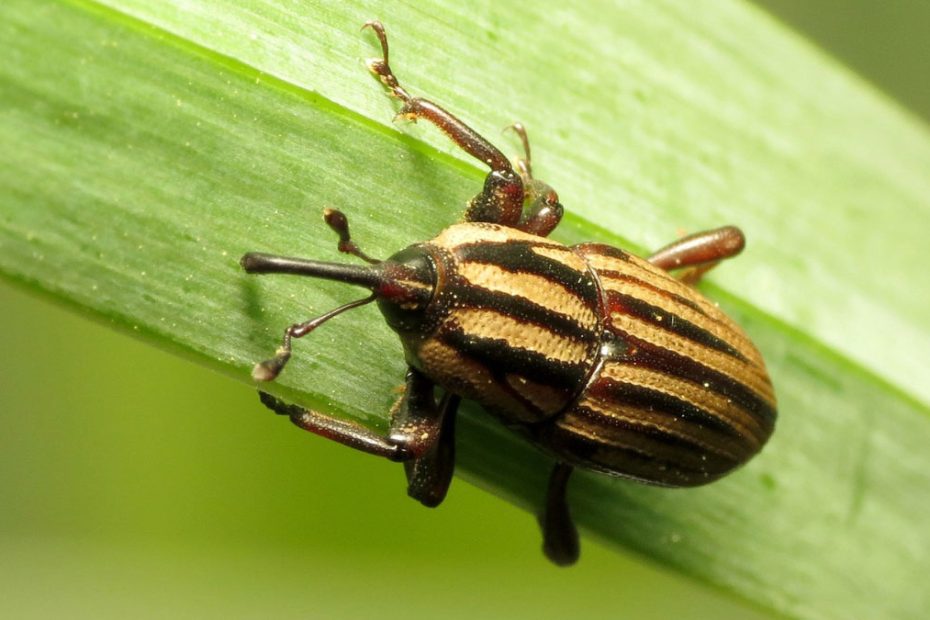You’re noticing patches of dead grass in your lawn, and upon closer inspection, you find small, dark beetles billbugs. These pests can wreak havoc on your beautiful green space, turning it into a patchy nightmare. Understanding how to get rid of billbugs is crucial to maintaining a healthy lawn.
Billbugs are more than just a nuisance; they can cause significant damage if left unchecked. The good news is you can tackle this problem effectively with the right approach. In this guide, you’ll learn practical steps to identify, control, and prevent billbug infestations, ensuring your lawn stays lush and vibrant.
Key Takeaways
- Early Detection is Key: Regular lawn inspections for signs like brown patches, sawdust-like frass, and loose turf are crucial for early identification of billbug infestations.
- Understanding Billbugs: Knowledge of billbugs’ life cycle and identifying characteristics helps time control measures effectively.
- Effective Control Methods: Both chemical solutions (like insecticidal sprays and granular insecticides) and natural remedies (such as neem oil and beneficial nematodes) can be used to tackle billbug infestations.
- Preventive Lawn Care: Maintaining a healthy lawn through regular mowing, watering, fertilizing, and dethatching reduces the chances of billbug infestations.
- Monitor Continuously: Consistent monitoring, including visual inspections, soil sampling, and use of pheromone traps, is essential for preventing future infestations.

Understanding Billbugs
To protect your lawn, you must first understand billbugs, their life cycles, and signs of infestation.
What Are Billbugs?
Billbugs are small, dark beetles that belong to the weevil family. They’re known for causing extensive damage to turfgrass.
Key Characteristics:
- Size: Adults measure up to 0.5 inches.
- Color: Dark brown to black.
- Shape: Distinctive snout for boring into grass.
These pests primarily target lawns, feeding on grass stems and roots.
Life Cycle of Billbugs
The billbug life cycle consists of four stages: egg, larva, pupa, and adult.
Stages:
- Egg: Laid in grass stems in spring.
- Larva: White, legless grubs that burrow into the soil.
- Pupa: Develop inside the soil before emerging.
- Adult: Emerge in late spring and summer, living up to a year.
Understanding this cycle helps in identifying the best times for control measures.
Signs of a Billbug Infestation
Detecting billbug presence early is crucial to prevent severe lawn damage.
Common Signs:
- Brown patches: Irregular dead grass areas.
- Sawdust-like frass: Found near the base of grass stems.
- Loose turf: Grass pulls out easily, revealing damaged roots.
Regular lawn inspections ensure early detection and effective management of billbugs.
Methods to Get Rid of Billbugs
To tackle a billbug infestation effectively, use various approaches. Choosing the right method depends on the extent and severity of the infestation and your preferences about chemical or natural solutions.
Chemical Solutions
Chemical solutions often provide the quickest and most effective means to eliminate billbugs. These methods involve using synthetic pesticides formulated to target billbugs specifically.
- Insecticidal Sprays: Use insecticidal sprays containing active ingredients like bifenthrin or permethrin. Apply in late spring when adults are active.
- Granular Insecticides: Opt for granular insecticides for a slow-release effect, ensuring sustained protection. Apply evenly across the lawn and water thoroughly for activation.
- Systemic Insecticides: Choose systemic insecticides for persistent infestations. These chemicals are absorbed by grass, killing larvae and adults feeding on it.
Natural Remedies
Natural remedies offer an eco-friendly way to manage billbugs without harsh chemicals. These methods can be effective, especially for small to moderate infestations.
- Beneficial Nematodes: Introduce beneficial nematodes, such as Steinernema carpocapsae, to the soil. These microscopic organisms parasitize and kill billbug larvae.
- Neem Oil: Use neem oil as a spray to disrupt the life cycle of billbugs. It acts as both a repellent and an insect growth regulator.
- Diatomaceous Earth: Apply diatomaceous earth around the lawn’s affected areas. This natural product dehydrates and kills billbugs upon contact.
Preventive Measures
Preventive measures are crucial for maintaining a healthy, billbug-free lawn long-term. Regular maintenance and strategic actions can prevent infestations.
- Regular Lawn Maintenance: Mow frequently, water deeply yet infrequently, and ensure proper fertilization. Healthy lawns are more resilient to pests.
- Inspect New Turf: Carefully inspect and quarantine new sod or turf products before installation. This prevents introducing billbugs to your lawn.
- Dethatching: Remove excess thatch buildup on lawns, as it provides a breeding ground for billbugs. Dethatch annually or biannually, depending on thatch levels.
Taking a comprehensive approach to billbug management using these methods can help ensure your lawn stays lush and vibrant.
Chemical Solutions for Billbug Control
Chemical solutions can provide rapid and effective control against billbug infestations. Knowing the right products and techniques ensures the best results for maintaining a healthy lawn.
Recommended Insecticides
Choosing the correct insecticide is crucial for effective billbug control. Here are the primary options:
- Insecticidal Sprays: Contact insecticides that kill billbugs on contact. Examples: Bifenthrin, Carbaryl.
- Granular Insecticides: Soil-applied granules that target billbug larvae. Examples: Imidacloprid, Clothianidin.
- Systemic Insecticides: Absorbed by plants, these insecticides protect from within. Examples: Chlorantraniliprole, Thiamethoxam.
Use these insecticides according to the manufacturer’s instructions for safety and effectiveness.
Application Techniques
Correct application techniques maximize the effectiveness of insecticides:
- Timing: Apply insecticides during late spring or early summer when adult billbugs are active.
- Coverage: Ensure even distribution of sprays or granules across the lawn.
- Watering: Water granular insecticides into the soil to activate them.
- Safety: Wear protective gear and follow all safety guidelines to avoid exposure.
Applying insecticides correctly is essential to achieving efficient billbug control.
Natural Remedies for Billbug Control
Natural remedies provide eco-friendly alternatives for controlling billbugs, minimizing chemical use and promoting sustainable lawn care.
Beneficial Predators
Certain predators naturally keep billbug populations in check. Encouraging these predators in your lawn can effectively reduce billbug infestations.
Types of Beneficial Predators
- Birds: Robins, woodpeckers, and starlings consume large quantities of billbugs. Planting trees and providing bird feeders attract these natural predators.
- Ground beetles: Prey on billbug larvae. Maintaining mulch and leaf litter supports these beneficial insects.
- Nematodes: Microscopic worms like Steinernema carpocapsae target and kill billbug larvae. Apply nematodes in the evening or on cloudy days to maximize their effectiveness, following package instructions for soil moisture requirements.
Homemade Solutions
You can also use homemade solutions to manage billbug infestations. These solutions are cost-effective and safe for pets and children.
Common Homemade Solutions
- Neem Oil: Acts as a natural insecticide. Dilute neem oil with water (2 tablespoons of oil per gallon of water) and spray directly on affected areas. Reapply every 10-14 days.
- Soap and Water: A simple soap solution can deter billbugs. Mix 2 tablespoons of liquid dish soap with 1 gallon of water. Spray the mixture on billbugs and their nests in the early morning or late evening.
- Diatomaceous Earth: Made from fossilized algae, this powder dehydrates and kills billbugs. Sprinkle a thin layer over your lawn, paying attention to areas where billbugs are active. Reapply after heavy rain or watering.
- Identify infested areas by looking for dead patches and sawdust-like material.
- Prepare the chosen solution following the specified ratios.
- Apply the solution evenly across affected lawn sections.
- Monitor lawn health and reapply as necessary.
Incorporating natural remedies and beneficial predators can help keep your lawn healthy and billbug-free while minimizing environmental impact.
Preventing Future Infestations
Regular maintenance and vigilance are essential to keep billbugs at bay. By adopting proactive measures, you can ensure a healthy, pest-free lawn throughout the year.
Lawn Maintenance Tips
Implementing proper lawn care techniques can help deter billbugs from establishing a foothold:
- Mowing: Maintain your grass at an optimal height of 2 to 3 inches. This helps to reduce habitat suitability for billbugs.
- Watering: Water your lawn deeply but infrequently, aiming for about 1 inch of water per week. This strengthens grass roots and makes the lawn less susceptible to pests.
- Fertilizing: Apply a balanced fertilizer, especially in the spring and fall, to promote healthy turf growth. Healthy grass can better withstand pest damage.
- Dethatching: Remove excess thatch, as it provides shelter for billbugs. Use a dethatcher once a year if the thatch layer exceeds 0.5 inches.
Regular Monitoring
Consistent lawn inspections are critical for early detection and management:
- Visual Inspections: Regularly check for signs of billbug activity, such as brown patches, sawdust-like frass, and loose turf.
- Soil Sampling: Take soil samples from different areas of your lawn every few months. Look for larvae or adult billbugs to identify infestations early.
- Pheromone Traps: Use pheromone traps to monitor adult billbug populations. Place these traps around the perimeter of your lawn to get an early warning of increased activity.
- Record Keeping: Maintain a log of your observations and any control measures applied. This helps track the effectiveness of your prevention strategies.
By incorporating these lawn maintenance and monitoring techniques, you can effectively prevent future billbug infestations and keep your grass healthy and strong.
Conclusion
By understanding the life cycle and signs of billbugs, you can take timely action to protect your lawn. Whether you choose chemical solutions or natural remedies, each method offers effective ways to control these pests. Regular maintenance and vigilant monitoring are key to preventing future infestations. With these strategies, you can ensure a lush, vibrant lawn free of billbugs year-round.
Frequently Asked Questions
What are billbugs?
Billbugs are small, dark beetles from the weevil family known for damaging lawns. They measure up to 0.5 inches, have a dark brown to black color, and feature a distinctive snout for boring into grass.
How can I identify a billbug infestation?
You can identify a billbug infestation by looking for brown patches of dead grass, sawdust-like frass near grass stems, and loose turf that pulls out easily.
When do billbugs typically emerge?
Adult billbugs typically emerge in late spring and summer. Understanding their life cycle helps in timing control measures effectively.
What are some signs of a billbug infestation?
Common signs include brown patches of dead grass, sawdust-like frass near grass stems, and easily pulled-up turf.
How do chemical methods work to eliminate billbugs?
Chemical methods such as insecticidal sprays, granular insecticides, and systemic insecticides provide quick and effective elimination by targeting multiple stages of the billbug life cycle.
Are there any natural remedies for controlling billbugs?
Yes, natural remedies include beneficial nematodes, neem oil, and diatomaceous earth, which offer eco-friendly alternatives for managing infestations.
How often should I inspect my lawn for billbugs?
Regular inspections are recommended, particularly during the active months of late spring and summer, to detect and manage infestations early.
What are some preventive measures to keep billbugs away?
Preventive measures include regular lawn maintenance, careful inspection of new turf, and dethatching. These strategies help maintain a healthy, billbug-free lawn.
What types of insecticides are recommended for billbug control?
Recommended insecticides include bifenthrin and carbaryl for sprays, and imidacloprid and clothianidin for granular applications.
Can beneficial predators help in controlling billbugs?
Yes, beneficial predators like birds and ground beetles can help keep billbug populations in check, serving as a natural control method.
How important is lawn maintenance in preventing billbug infestations?
Regular lawn maintenance, including optimal mowing height, deep but infrequent watering, balanced fertilization, and dethatching, is crucial in preventing billbug infestations.
What should I include in my regular lawn maintenance routine?
Include optimal mowing height, deep but infrequent watering, balanced fertilization, and dethatching to deter billbugs and maintain a healthy lawn.
How can I monitor pest activity effectively?
Consistent monitoring through visual inspections, soil sampling, pheromone traps, and record-keeping helps track pest activity and the effectiveness of prevention strategies.
Are homemade solutions effective against billbugs?
Homemade solutions like neem oil, soap and water, and diatomaceous earth can be cost-effective and safe options for managing billbug infestations.
